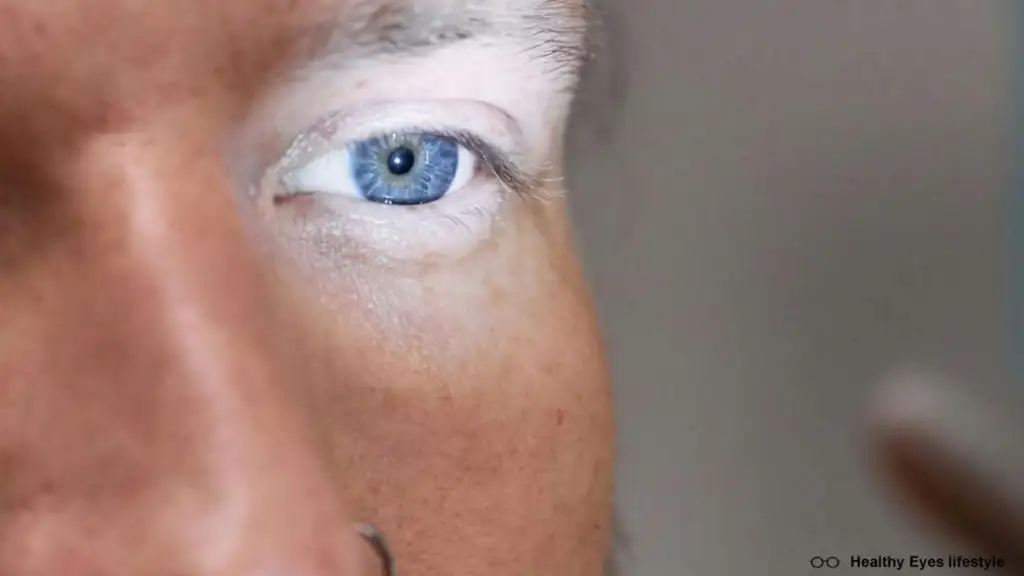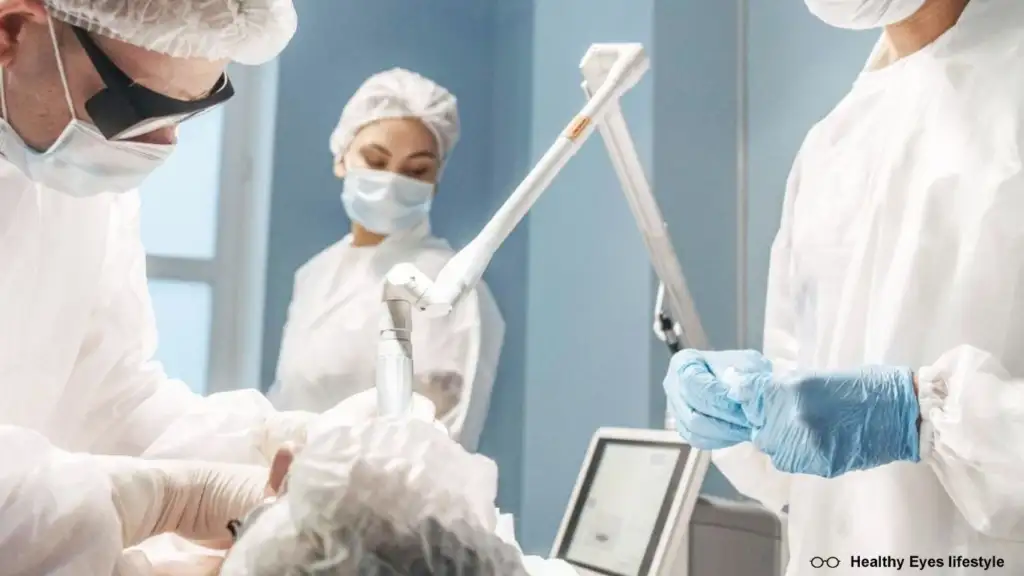Share This Article
Table of Contents
Introduction to Glaucoma
Glaucoma is a complex and progressive eye condition that damages the optic nerve, often due to elevated intraocular pressure (IOP). This pressure builds up because the aqueous humor—the fluid inside the eye—does not drain properly. If left untreated, glaucoma can lead to permanent vision loss. It is often referred to as the “silent thief of sight” because, in many cases, it progresses without noticeable symptoms until significant vision is lost.
There are two primary types of glaucoma: open-angle glaucoma and angle-closure glaucoma. Open-angle glaucoma is the most common type, often developing slowly over time. In contrast, angle-closure glaucoma is more sudden and can cause a rapid increase in eye pressure, requiring immediate medical attention.
While there is no cure for glaucoma, treatments can manage the condition. Medications, laser treatments, and surgery are options used to lower intraocular pressure and prevent further damage to the optic nerve. When medications and less invasive treatments fail to control the disease, surgery may be the most effective course of action.

Types of Glaucoma Surgery
Surgical interventions for glaucoma are designed to lower intraocular pressure by improving the drainage of fluid from the eye. Below are the primary types of surgeries used in glaucoma management.
1. Trabeculectomy
Trabeculectomy is one of the most well-established surgical procedures for glaucoma. It involves creating a new drainage pathway in the sclera (the white part of the eye) for the aqueous humor to exit the eye. This small hole allows fluid to drain, reducing the pressure within the eye. Surgeons may use sutures to control the flow of fluid, ensuring that the pressure does not drop too low.
| Pros and Cons of Trabeculectomy |
| Pros: Highly effective in lowering IOP, long-term solution for moderate to severe glaucoma |
| Cons: Risks include infection, bleeding, scarring, or hypotony (excessively low eye pressure) |
Although trabeculectomy is effective, it requires careful postoperative monitoring. The surgery typically has a high success rate, but complications such as scarring may block the new drainage channel, requiring further treatment or revision surgery.
2. Minimally Invasive Glaucoma Surgery
Minimally Invasive Glaucoma Surgery, or MIGS, is a set of newer surgical techniques designed to minimize tissue disruption while effectively lowering intraocular pressure. MIGS procedures involve smaller incisions and less invasive techniques than traditional glaucoma surgeries.
One of the most popular forms of MIGS is the iStent, a tiny device inserted into the eye to help improve fluid drainage. Other MIGS procedures include XEN Gel Stents and canaloplasty, both of which aim to enhance fluid outflow and reduce pressure.
| Pros and Cons of MIGS |
| Pros: Less invasive, shorter recovery time, fewer complications |
| Cons: May be less effective for advanced or severe glaucoma |
MIGS is particularly beneficial for patients with mild to moderate glaucoma. However, its effectiveness may be limited in more advanced stages of the disease, where more traditional surgeries like trabeculectomy or tube shunt surgery might be required.
3. Tube Shunt Surgery
Tube shunt surgery is often recommended for patients who have not responded well to other treatments, including trabeculectomy. In this procedure, a small, flexible tube is implanted into the eye, allowing fluid to bypass the eye’s natural drainage channels and flow into a small reservoir placed under the conjunctiva (the outer layer of the eye).
The surgery is generally used in patients with complex or secondary types of glaucoma, such as those resulting from previous eye surgeries, trauma, or inflammation. While it is highly effective at lowering intraocular pressure, tube shunt surgery requires careful postoperative care, as the eye may continue producing too much fluid.
4. Laser Surgery
Laser surgery is another option for managing glaucoma. It is less invasive than traditional surgeries and can often be performed as an outpatient procedure. There are several types of laser surgery used for glaucoma:
- Laser Trabeculoplasty: Used for open-angle glaucoma, this procedure helps improve the drainage of fluid from the eye by treating the trabecular meshwork (the tissue responsible for fluid outflow).
- Laser Iridotomy: Used primarily for angle-closure glaucoma, this procedure creates a small hole in the iris to improve fluid flow.
- Cyclophotocoagulation: This procedure reduces the production of aqueous humor by using laser energy to target the ciliary body (the part of the eye that produces fluid).

Benefits and Risks of Glaucoma Surgery
Glaucoma surgery is often necessary when medications and other treatments fail to control intraocular pressure. By creating new pathways for fluid drainage or reducing fluid production, surgery can help prevent further vision loss. However, like any surgical procedure, it carries certain risks.
Benefits of Glaucoma Surgery:
- Lowered intraocular pressure
- Reduced need for glaucoma medications
- Preservation of remaining vision
- Improved quality of life for patients with uncontrolled glaucoma
Risks of Glaucoma Surgery:
- Infection
- Bleeding within the eye
- Scarring that blocks the new drainage pathway
- Hypotony (excessively low eye pressure)
- Vision changes, including blurry vision
It’s important for patients to discuss both the benefits and risks with their ophthalmologist to understand the potential outcomes.
Preoperative Preparations
Preparing for glaucoma surgery involves a few key steps to ensure a successful procedure:
- Medical and Eye Examination: Your ophthalmologist will conduct a thorough eye exam and review your medical history to determine the best surgical approach for your condition.
- Medications: You may be asked to stop taking certain medications, particularly blood thinners, before surgery. Be sure to inform your doctor about any medications or supplements you are taking.
- Fasting and Pre-Surgery Instructions: In some cases, you may be asked to fast for several hours before the surgery, especially if general anesthesia will be used.
- Transportation: Since vision may be impaired immediately after surgery, arrange for someone to drive you home following the procedure.
Postoperative Care and Recovery
The recovery process after glaucoma surgery is crucial for achieving the best possible outcomes. Here’s what to expect:
- Eye Protection: You may be required to wear an eye patch or shield for a few days to protect the eye from injury and reduce the risk of infection.
- Eye Drops: Postoperative eye drops are essential to reduce inflammation and prevent infection. These medications should be used exactly as prescribed.
- Activity Restrictions: Avoid strenuous activities, heavy lifting, or bending over, as these can increase eye pressure and disrupt healing.
- Follow-Up Appointments: Regular follow-up visits with your ophthalmologist will help ensure that your eye is healing properly and that the surgery was successful in lowering eye pressure.

Success Rates and Long-Term Outlook
Glaucoma surgeries, particularly trabeculectomy and tube shunt surgeries, have high success rates in terms of reducing intraocular pressure. However, the long-term outlook depends on various factors, including the type of glaucoma, the stage of the disease, and how well the eye heals post-surgery. While surgery can slow or stop the progression of glaucoma, it cannot restore vision lost due to optic nerve damage.
Glaucoma Surgery Cost and Insurance
The cost of glaucoma surgery varies depending on the type of procedure, the surgeon’s fees, and the location of the surgery. For example:
- Laser surgeries tend to cost between $1,000 and $3,000 per eye.
- Trabeculectomy or tube shunt surgery may cost upwards of $4,000 to $6,000.
Most health insurance plans, including Medicare, cover glaucoma surgeries. However, patients should check with their provider to confirm what portion of the costs will be covered and what out-of-pocket expenses they might expect.
Conclusion
In conclusion, glaucoma surgery plays a pivotal role in managing intraocular pressure and preventing further vision loss for patients with advanced glaucoma. With various surgical options available, from traditional trabeculectomy to less invasive MIGS, patients can find a treatment that suits their specific needs.
FAQs
Q: Can glaucoma surgery be performed on both eyes at once?
A: Generally, glaucoma surgery is performed on one eye at a time. If both eyes need surgery, the procedures are usually scheduled a few weeks apart to monitor the success of the first surgery and reduce the risk of complications.
Q: How long does glaucoma surgery take?
A: The duration of glaucoma surgery varies depending on the procedure. Most laser surgeries take about 10 to 20 minutes, while more invasive surgeries like trabeculectomy or tube shunt surgery may take 1 to 2 hours.



